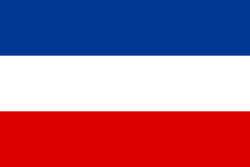Carcano
| Carcano | |
|---|---|
|
Carcano Modello 1891 infantry rifle | |
| Type | Bolt-action rifle |
| Place of origin | Kingdom of Italy |
| Service history | |
| In service |
1891–1981 (Italy) 1981–present (others) |
| Used by | See Users |
| Wars | |
| Production history | |
| Designed | 1890 |
| Produced | 1891–1945 |
| No. built | 2,063,750–3,000,000 of all variants |
| Variants |
Long rifle, short rifle, cavalry carbine, special troops' carbine See Variants |
| Specifications (Fucile mod. 91) | |
| Weight | 3.9 kg (8.6 lb) |
| Length | 1,285 mm (50.6 in) |
| Barrel length | 780 mm (30.7 in) |
|
| |
| Cartridge | |
| Action | Bolt action |
| Muzzle velocity | 700 m/s (2,300 ft/s) |
| Effective firing range | 1,000 m (1,100 yd) |
| Feed system | 6 round integral magazine, loaded with an en-bloc clip |
Carcano is the frequently used name for a series of Italian bolt-action, magazine-fed, repeating military rifles and carbines. Introduced in 1891, this rifle was chambered for the rimless 6.5×52mm Carcano cartridge (Cartuccia Modello 1895). It was developed by the chief technician Salvatore Carcano at the Turin Army Arsenal in 1890 and called the Modello (model) 91 or simply M91. Successively replacing the previous Vetterli-Vitali rifles and carbines in 10.35×47mmR, it was produced from 1892 to 1945. The M91 was used in both rifle (fucile) and shorter-barreled carbine (moschetto) form by most Italian troops during the First World War and by Italian and some German forces during the Second World War. The rifle was also used during the Winter War by Finland, and again by regular and irregular forces in Syria, Libya, Tunisia, and Algeria during various postwar conflicts in those countries.
The Type I Carcano rifle was produced by Italy for the Japanese Empire prior to World War II. After the invasion of China, all Arisaka production was required for use of the Imperial Army, so the Imperial Navy contracted with Italy for this weapon in 1937. The Type I is based on the Type 38 rifle and uses a Carcano action, but retains the Arisaka/Mauser type 5-round box magazine. The Type I was used primarily by Japanese Imperial Naval Forces and was chambered for the Japanese 6.5×50mm Arisaka cartridge. Approximately 60,000 Type I rifles were produced by Italian arsenals for Japan.
A Carcano Model 91/38 was the John F. Kennedy assassination rifle.
History
Although this rifle is often called "Mannlicher–Carcano", especially in American parlance, neither that designation nor the name "Mauser–Parravicino" is correct. Its official designation in Italian is simply Modello 1891, or M91 ("il novantuno"). The magazine system uses en bloc charger clips which were originally developed and patented by Ferdinand Mannlicher, but the actual shape and design of the Carcano clip is derived from the German Model 1888 Commission Rifle.
Until 1938, all M91 rifles and carbines were chambered for the rimless 6.5×52mm Modello 1895 cartridge, using a round-nose metal case bullet of 160 grains weight at approximately 2,000-2,400 ft/s muzzle velocity, depending upon barrel length. At least one small arms authority noted inconsistencies in powder types in arsenal-loaded 6.5×52mm military ammunition, often with different powder types and ammunition lots intermixed within a single clip of ammunition.[1] The practice of intermixing powder types and ammunition lots in clipped rifle ammunition was generally avoided by arsenals of other nations, as it generally resulted in varying bullet velocities and excessive bullet dispersion on the target.
After reports of inadequate performance at both short and long ranges[2][3] during the campaigns in Italian North Africa (1924-1934), and the Second Italo-Abyssinian War (1934), the Italian army introduced a new short rifle in 1938, the Modello 1938, together with a new cartridge in 7.35×51mm caliber. In addition to the slightly larger caliber, Italian ordnance designers introduced a spitzer-type bullet for the new cartridge, with the tip filled with aluminum to produce an unstable (tumbling) projectile upon impact in soft tissue (a design most likely copied from the .303 British Mk VII bullet).
However, the Italian government was unable to successfully mass-produce the new arms in adequate quantities before the onset of war, and in 1940, all rifle and ammunition production reverted to 6.5 mm, but no 7.35 mm Mod. 38 rifles nor carbines were ever re-barreled to the old 6.5×52mm caliber. Some Italian troops serving on the Russian front were armed with 7.35 mm Mod. 1938 rifles, but exchanged them in 1942 for 6.5×52 mm arms.[4]

Approximately 94,500 7.35mm Modello 1938 rifles were shipped to Finland, where they were known as Terni carbines.[5] They were primarily used by security and line-of-communications troops during the Winter War of 1939–1940, though some frontline troops were issued the weapon.[5] According to reports, the Finns disliked the rifle.[5] With its non-standard 7.35 mm caliber, it was problematic to keep frontline troops supplied with ammunition, and its non-adjustable rear sight (fixed for 300 m) made it ill-suited for use in precision shooting at the varied ranges encountered by Finnish soldiers during the conflict.[5] Soldiers also complained that the ammunition demonstrated excessive bullet dispersion on the target.[5] Whenever possible, Finnish soldiers discarded the weapon in favor of rifles acquired on the battlefield,[5] including standard models of captured Soviet-made Mosin–Nagant rifles. The latter was more accurate and had the advantage of using commonly available 7.62×54mmR ammunition. By the outbreak of the Continuation War, Finnish Army headquarters had got the message. The remaining Mod. 1938 7.35 mm rifles were issued to the Finnish Navy, as well as anti-aircraft, coastal defense, and other second-line (home front) troops.[5]
In 1941, the Italian military returned to a long-barrelled infantry rifle once again (slightly shorter than the original M91), the Carcano M91/41. True sniper versions never existed, but in World War I a few rifles were fitted with telescopic lenses and issued for service use (World War II scoped rifles were strictly prototypes).
Since the 1980s, several lots of Moschetti M91/38 TS (special troops' carbines) chambered for the German 8×57mm Mauser sS heavy ball round, have appeared on the surplus markets. Two small batches of Moschetti M91/38 TS carbines shows barrels marked 1938 and 1941, but they were not used at these times with any Italian forces, and their peculiar serial numbering suggests that these might just be rebored unused surplus barrels that were converted with other ones after 1945. Many 7.92 mm Carcano carbines were apparently exported to Egypt after World War II, where they served as drill and training carbines. Several also bear Israeli armed forces markings. The occasionally used model moniker "Model 1943 (M43)" for these converted 7.92mm rifles is wrong, as they were never so designated by the Italian military.
German forces captured large quantities of Carcanos after Italy's capitulation in September 1943. It was the most commonly issued rifle to the German Volkssturm ("People's Militia") units in late 1944 and 1945.[6]
After World War II, Italy replaced its Carcano rifles first with British Lee–Enfields and then with the US .30 caliber (7.62 mm) M1 Garand semi-automatic rifle which the Italians labeled the 'Model 1952 (M52). Finland sold all of its approximately 74,000 remaining 7.35 mm M91/38 Carcano rifles on the surplus market. As a consequence, large quantities of surplus Carcanos were sold in the USA and Canada beginning in the 1950s. In Italy, the Polizia di Stato retained the rifle, retiring it from service in 1981. Captured 6.5mm Carcano rifles were used by Greek forces post-war, with ammunition supplied by U.S. Western Cartridge Co. Some were also converted to 6.5×54mm Mannlicher–Schönauer, one of the standard cartridges of the Greek military at the time.
The original Carcano Modello 1895 cartridge (6.5×52mm), was also used in World War I-era machine guns in the Modello 30 light machine gun; the latter was employed in Abyssinia and in World War II by Italian troops until the Armistice. In 1935 the 8×59mm Breda cartridge was adopted for some Italian heavy machine guns (rechambered Fiat-Revelli, Breda M37, Breda M38); its longer range and heavier projectile proved much more effective in combat, particularly against motorized troops.
During the Libyan Civil War in 2011, many rebels went into battle with their personally-owned weapons, including old bolt-action rifles and shotguns. Of these, Carcano-style rifles and carbines have been the most frequently observed style of bolt-action rifle. They were predominantly used by rebels in the Nafusa Mountains. These old weapons saw combat once again due to the rebels' limited access to modern firearms. Additionally, some Libyan rebels preferred to use their familiar hunting weapons over the more modern, yet unfamiliar, assault rifles available.[7][8] According to Al-Fitouri Muftah, a member of the rebel military council overseeing the western mountain front, as many as 1 in 10 rebels in the region were armed with World War II-era weapons.[9]
Variants
All variants used the same Carcano bolt action, fed by an en-bloc clip; the rifles and carbines had different barrel lengths and differences in stocks and sights depending on barrel length.[10][11] As noted in the introduction, the word moschetto means literally "musket" but was used generally by Italian arms makers as a descriptor of Italian 20th century rifles, often shorter-barrelled rifles in the carbine style meant for other than regular infantry uses. Regular length infantry rifles are named as fucile models.
- Fucile di Fanteria Modello 1891 (infantry rifle Model 1891, detachable knife bayonet, adopted in 1891 in 6.5×52mm caliber) 30.7 inch barrel.[12]
- Moschetto da Cavalleria (cavalry carbine) Mod. 91 (6.5×52mm carbine with integral folding bayonet, adopted in 1893) 17.7 inch barrel.[13]
- Moschetto per Truppe Speciali Mod. 91 (or 6.5×52mm M91 TS, carbine for special troops (TS = Truppe Speciali). These included machinegun, mortar and motorcycle crews, adopted 1897) 17.7 inch barrel.[12] Both sling swivels are mounted below the stock and barrel ring, where they are visible from both sides of the rifle.
- Moschetto di Fanteria (infantry carbine rifle) Mod. 91/24 (6.5×52mm carbine, modification of the original Mod. 1891 with shortened barrel and altered rearsight blade, adopted in 1924) 17.7 inch barrel.[12]
- Moschetto per Truppe Speciali Mod. 91/28 (lightly altered M 91 6.5×52mm carbine, adopted in 1928) 17.7 inch barrel.[12]
- Moschetto per Truppe Speciali con Tromboncino (con Tromboncino, with grendade launcher) Mod. 91/28 (modified 91/28 coupled with a 38.5 mm grenade launcher) 17.7 inch barrel.
- Fucile di Fanteria Mod. 1938 ("infantry rifle" Model 1938, adopted in 1938 in 7.35×51mm caliber, fixed sights, detachable folding knife bayonet) 20.9 inch barrel.[12]
 Carcano Model 1891/38 Infantry rifle
Carcano Model 1891/38 Infantry rifle - Moschettos (carbines) Mod. 1938 (folding bayonet) and Mod. 1938 TS (detachable bayonet) carbine versions of Model 1938 short rifle in 7.35×51mm, 17.7 inch barrel.
- Fucile di Fanteria Mod. 91/38 (Model 1938 "infantry rifle" chambered in 6.5×52mm caliber since 1940). The barrel is the 20.9 inch barrel of the earlier 7.35 mm caliber, but now changed to 6.5 mm. Unlike the slightly shorter and lighter TS Moschetto, it also has both sling swivels on the left side of the stock, not visible from the right side of the rifle, identifying it as a Fucile di Fanteria type. This is the model (stamped "1940" to show manufacture date) owned by Lee Harvey Oswald and determined to be the John F. Kennedy assassination rifle. From 1940, the Moschetto Mod. 1938 and Mod. 1938 TS were also made in 6.5×52mm.
- Fucile di Fanteria Mod. 91/41 (6.5×52mm "infantry rifle" adopted in 1941, adjustable sights), 27.2 inch barrel.[12]
- Type I Rifle (6.5×50mm infantry rifle, produced for export to Japan, adjustable sights)
Users
 Albania[14]
Albania[14].svg.png) Austria-Hungary: Captured during World War I, about 49,500 were converted to use the available 6.5×54mm Mannlicher–Schönauer cartridges.[15]
Austria-Hungary: Captured during World War I, about 49,500 were converted to use the available 6.5×54mm Mannlicher–Schönauer cartridges.[15] Kingdom of Bulgaria[4]
Kingdom of Bulgaria[4] Independent State of Croatia[16]
Independent State of Croatia[16].svg.png) Ethiopian Empire
Ethiopian Empire Egypt
Egypt Finland[14]
Finland[14] German Empire
German Empire Italy[4]
Italy[4]
.svg.png) Empire of Japan[14]
Empire of Japan[14] Persia
Persia Republic of China[17]
Republic of China[17] Romania
Romania Kingdom of Serbs, Croats and Slovenes: In 1921 the Kingdom had about 11,000 Italian M91 rifles in stock. In the start of the 1920s it was proposed these be exchanged for Mauser rifles with the Kingdom of Italy. The proposition was declined in 1922 and these rifles remained in Yugoslav hands until 1941.[18]
Kingdom of Serbs, Croats and Slovenes: In 1921 the Kingdom had about 11,000 Italian M91 rifles in stock. In the start of the 1920s it was proposed these be exchanged for Mauser rifles with the Kingdom of Italy. The proposition was declined in 1922 and these rifles remained in Yugoslav hands until 1941.[18] Somalia
Somalia Saudi Arabia
Saudi Arabia Malta
Malta.svg.png) Nazi Germany[6][19]
Nazi Germany[6][19].svg.png) National Liberation Army (Libya)[20]
National Liberation Army (Libya)[20]
Kennedy assassination rifle

In March 1963, Lee Harvey Oswald purchased a "6.5 [mm] Italian carbine," later improperly called a Mannlicher–Carcano, through mail order, for $19.95 ($155 in 2015 dollars).[21] The advertisement only specified a "6.5 Italian Carbine" and actually shows a Carcano model M91 TS, which was the 36" Carcano carbine model sold through the ad when it was originally placed. However, from a time 11 months before Oswald placed his order, the Chicago sporting goods store from which he purchased it had been shipping the slightly longer (40.2") Model 91/38 under the same ad, and this is the weapon Oswald received.
Official reports have concluded that Oswald used this weapon to assassinate U.S. President John F. Kennedy on November 22, 1963. The rifle, made in the Terni arsenal in 1940 and bearing the serial number C2766, was equipped for an extra $7 with an inexpensive new 4x18 Japanese telescopic sight, on a sheet metal side mount. It was later scrutinized by local police, the FBI, the U. S. Army, and two federal commissions. Shooting tests, conducted by those groups and others using the original rifle or similar models, addressed questions about the speed and accuracy with which the Carcano could be fired. Following lawsuits over its ownership, the rifle ended up in storage at the National Archives. The assassination was one of the factors leading to passage of the Gun Control Act of 1968, which banned mail order sales of firearms.
See also
Notes
- ↑ Dunlap, Roy F., Ordnance Went Up Front, Samworth Press (1948), pp. 47: Dunlap, a small arms ordnance expert serving with the Foreign Weapons section in the Royal Ordnance Corps, broke down many Italian 6.5×52 mm cartridges, and sometimes found different components in the same rifle clip—up to four different types of smokeless powder, using different size flash holes for the primer in an attempt to regulate the burning speed and resultant velocity.
- ↑ Dunlap, Roy F., Ordnance Went Up Front, Samworth Press (1948), pp. 47-48: The 6.5mm Carcano had reportedly proved inadequate in stopping charges of native tribesmen for a number of years, prompting various stop-gap solutions such as brass-jacketed multiple projectile or frangible explosive bullets, apparently for use against tribesmen in colonial conflicts.
- ↑ Weeks, John, World War II Small Arms, New York: Galahad Books, p. 47: the 6.5mm's blunt bullet and relatively low velocity also gave poor long range performance in machine guns, compared to the cartridges used by most other nations.
- 1 2 3 Miller, David. Fighting Men of World War II, Volume I: Axis Forces--Uniforms, Equipment, and Weapons (Fighting Men of World War II). Stackpole Books. p. 369. ISBN 0-8117-0277-4.
- 1 2 3 4 5 6 7 The Finnish Army 1918–1945: Rifles, Part 6 Three Mausers and One Terni Jaeger Platoon Website
- 1 2 Yelton, David. Hitler's Home Guard: Volkssturmman. Osprey Publishing. p. 62. ISBN 1-84603-013-7.
- ↑ حد ثوار جبل نافوسه يستعمل بنذقية جده الايطاليه وعمرها اكثر من 100 سنة
- ↑ Chivers, C.J. (April 20, 2011). "Inferior Arms Hobble Rebels in Libya War". The New York Times.
- ↑ Smith, David (July 12, 2011). "Libyan rebels make gains against Gaddafi forces in western mountains". The Guardian. Retrieved August 26, 2011.
- ↑ W.H.B. Smith, Small Arms of the World, Stackpole, 1966, 8th ed., pages 476, 477.
- ↑ See also this guide
- 1 2 3 4 5 6 "The Italian Carcano Rifle". Retrieved 2012-09-26.
- ↑ Julio S. Guzmán, Las Armas Modernas de Infantería, Abril de 1953
- 1 2 3 Walter, John. Rifles of the World. Krause Publications. p. 273. ISBN 0-89689-241-7.
- ↑ "Italian Carcano Rifles Captured by Austro-Hungary". hungariae.com. Manowar. 28 Dec 2010. Retrieved 21 Feb 2015.
- ↑ Vladimir Brnardic. World War II Croation Legionaries: Croation Troops Under Axis Command 1941—45. p. 9. ISBN 978-1-4728-1767-9.
- ↑ Chinese Warlord Armies 1911-30 by Philip Jowett, page 22.
- ↑ Bogdanivić, Branko (1990). Puške: dva veka pušaka na teritoriji Jugloslavije. SPORTINVEST, Belgrade. pp. 110–123. ISBN 86-7597-001-3.
- ↑ W. Darrin Weaver (2005). Desperate Measures: The Last-Ditch Weapons of the Nazi Volkssturm. Collector Grade Publications. p. 61. ISBN 0889353727.
- ↑ Old Italian Carcanos Used by Rebels in Libya Revolutionary Program, July 7, 2011
- ↑ http://data.bls.gov/cgi-bin/cpicalc.pl?cost1=19.95&year1=1963&year2=2015
External links
| Wikimedia Commons has media related to Carcano. |
- Carcano Model Identification
- Modern Firearms
- Italian page on Carcanos
- Carcano M38 cal.7.35x51mm shooting (video); close-up (video)

